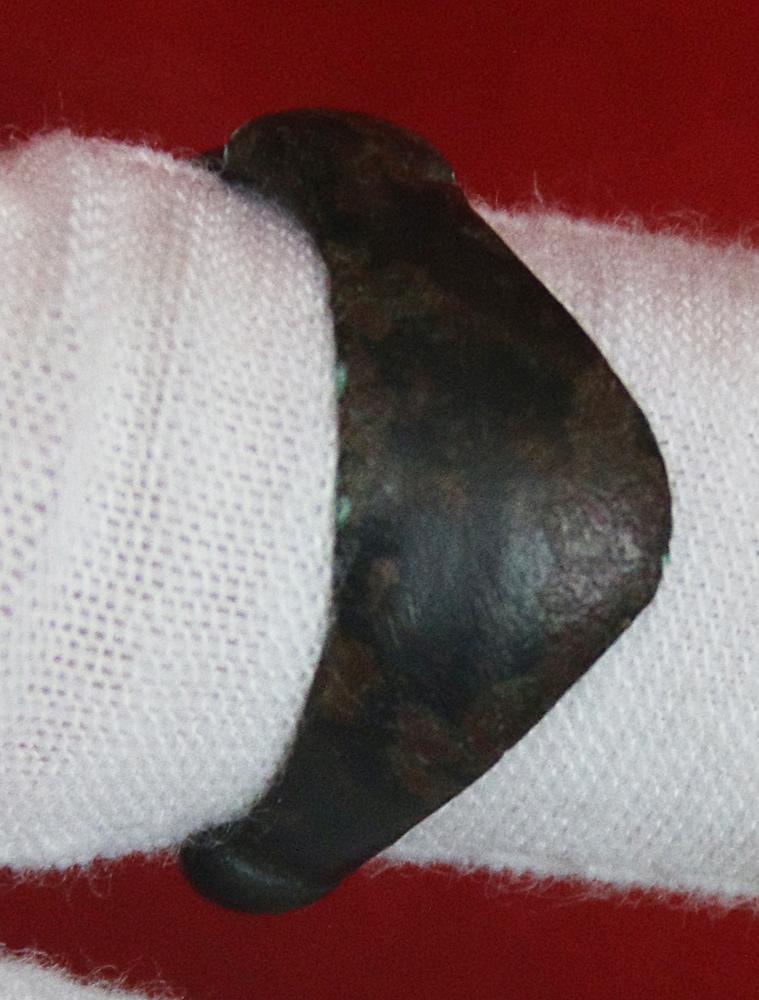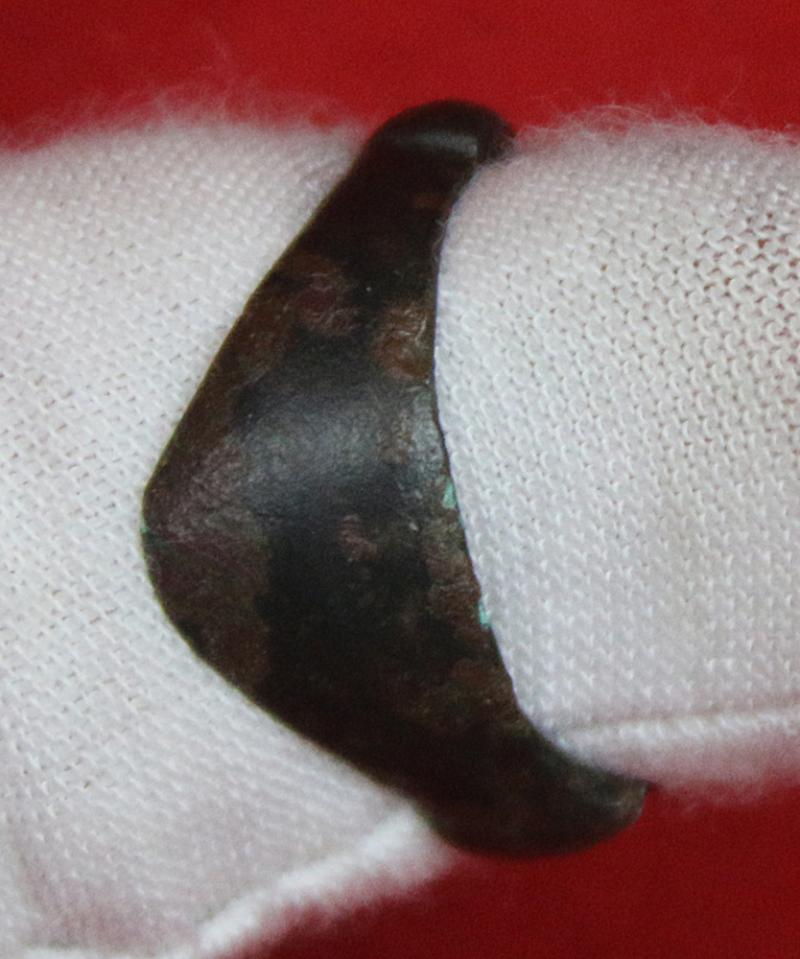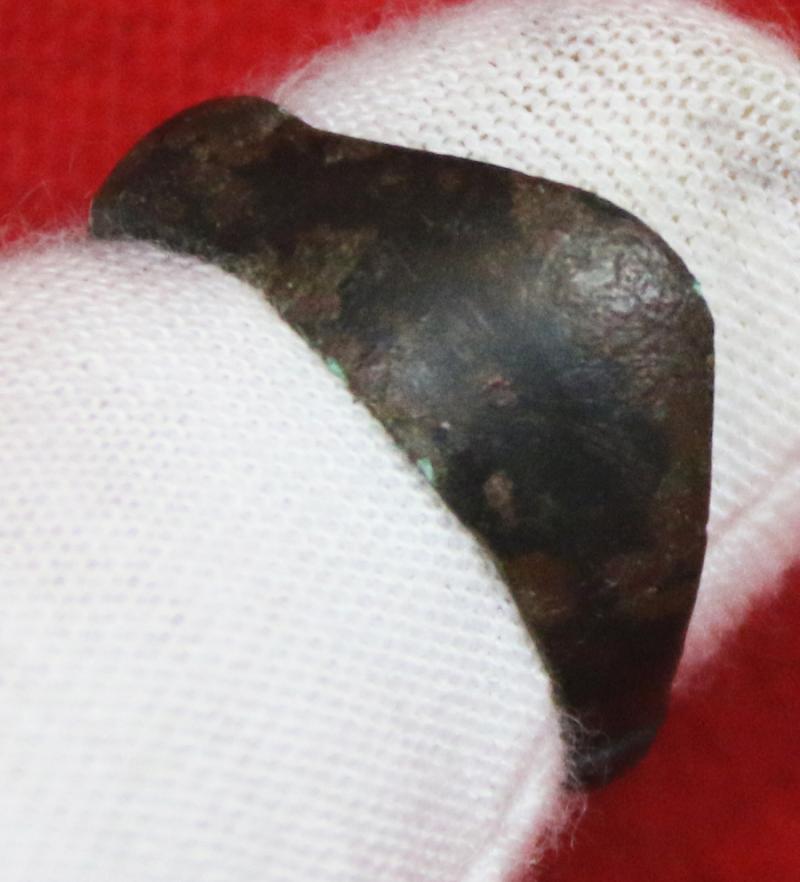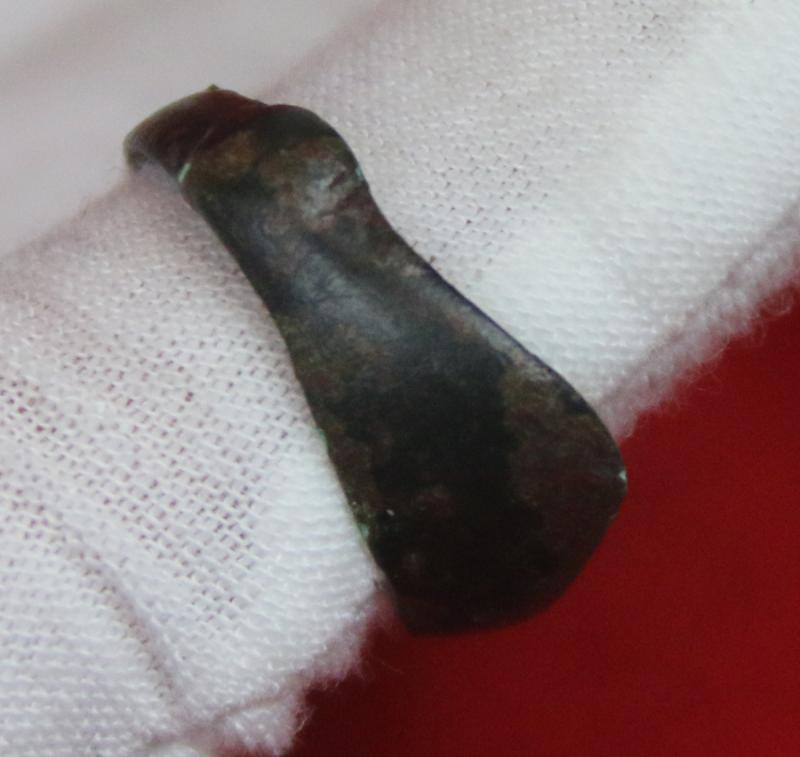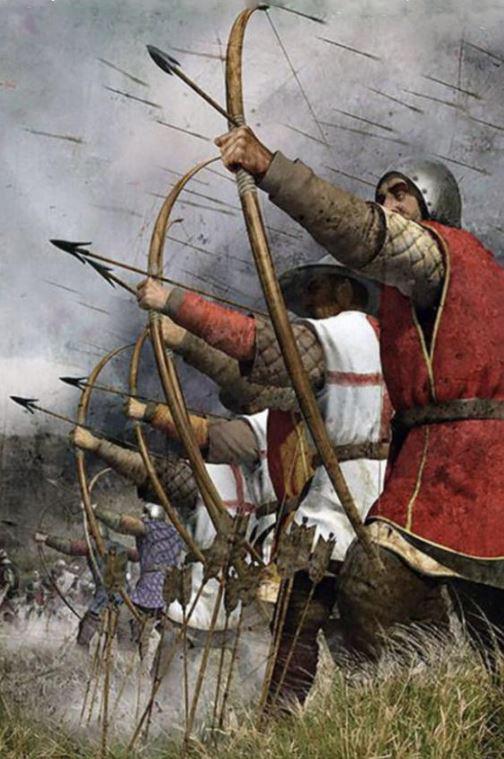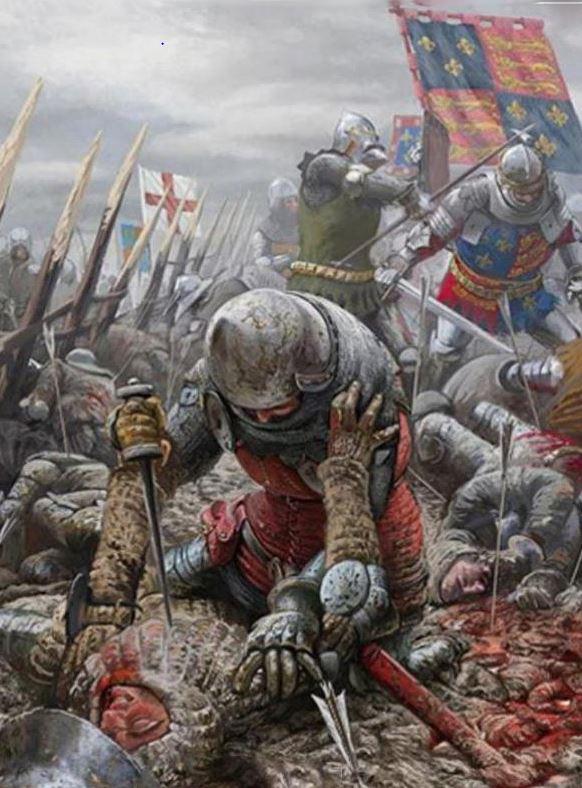Superb Original Bronze Medieval Longbow Archer’s Thumb Ring, Late 14th Century. the Battle Agincourt 1415. Recovered From Azincourt in the 1820's
From part of our fabulous original ancient artefact collection of ancient antiquities, swords and rings etc. Many from an 1820 Grand Tour classical collection from a Scottish Duke's family, recovered from battle sites around Europe and the Middle East.
This archers thumb ring was made circa 1400, over 600 years ago, and this is a superb, beautiful and historical original artefact.
A thumb ring is a piece of equipment designed to protect the archer’s thumb during archery. It is a ring of that can be made of leather, stone, horn, wood, bone, antler, ivory, metal, ceramics, which fits over the end of the thumb, coming to rest at the outer edge of the outer joint. Typically a flat area extends from the ring to protect the pad of the thumb from the bowstring; this may be supplemented by a leather extension. An absolute iconic original piece of British history. In battlefield recovered condition but very nice indeed. Beautiful Items such as this were oft acquired in the 18th and early 19th century by British noblemen and women touring battle sites in Northern France and Italy, in fact most of Europe and the Middle East, on their so-called ‘Grand Tour’. They were often placed on display upon their return home, within the family’s 'cabinet of curiosities', within their country house. Some significant British stately homes had entire galleries displaying the treasures and artefacts gathered and purchased on such tours, and some tours lasted many years, and the accumulated souvenirs numbered in their hundreds or even thousands. A popular pastime in the 18th and 19th century, comprised of English ladies and gentlemen traveling for many months, or even years, througout classical Europe, and the Middle East, acquiring knowledge and education on the arts, and thus returning with antiquities and antiques as souvenirs for their private collections, and these travels have been thus called ‘Grand Tours’.
The Battle of Agincourt was a major English victory in the Hundred Years' War. The battle took place on 25 October 1415 (Saint Crispin's Day) in the County of Saint-Pol, Artois, some 40 km south of Calais. Along with the battles of Crécy (1346) and Poitiers (1356), it was one of the most important English triumphs in the conflict. England's victory at Agincourt against a numerically superior French army crippled France, and started a new period in the war during which the English began enjoying great military successes.
After several decades of relative peace, the English had renewed their war effort in 1415 amid the failure of negotiations with the French. In the ensuing campaign, many soldiers perished due to disease and the English numbers dwindled, but as they tried to withdraw to English-held Calais they found their path blocked by a considerably larger French army. Despite the disadvantage, the following battle ended in an overwhelming tactical victory for the English.
King Henry V of England led his troops into battle and participated in hand-to-hand fighting. The French king of the time, Charles VI, did not command the French army himself, as he suffered from severe psychotic illnesses with moderate mental incapacitation. Instead, the French were commanded by Constable Charles d'Albret and various prominent French noblemen of the Armagnac party.
This battle is notable for the use of the English longbow in very large numbers, with the English and Welsh archers forming up to 80 percent of Henry's army. The decimation of the French cavalry at their hands is regarded as an indicator of the decline of cavalry and the beginning of the dominance of ranged weapons on the battlefield.
Agincourt is one of England's most celebrated victories. The battle is the centrepiece of the play Henry V by Shakespeare. Juliet Barker in her book Agincourt: The King, the Campaign, the Battle ( published in 2005) argues the English and Welsh were outnumbered "at least four to one and possibly as much as six to one". She suggests figures of about 6,000 for the English and 36,000 for the French, based on the Gesta Henrici's figures of 5,000 archers and 900 men-at-arms for the English, and Jean de Wavrin's statement "that the French were six times more numerous than the English". The 2009 Encyclopædia Britannica uses the figures of about 6,000 for the English and 20,000 to 30,000 for the French. Part of an original medieval collection we have just acquired, of Viking and early British relics of warfare from ancient battle sites recovered up to 220 years ago.
When drawing a bow using a thumb draw, the thumb is hooked around the bowstring just beneath the arrow and its grip reinforced with the first (sometimes second) finger. The bowstring rests against the inner pad of the archer's thumb and the thumb ring protects the skin. The bowstring rests against the flat of the ring when the bow is drawn. Today, thumb rings are used by archers practicing styles from most of Asia and some regions of northern Africa. Ishi, the "last wild American Indian", used a thumb draw, but no skin protection.
Thumb rings have been in use in Asia since the Neolithic period. The first examples were likely made of leather,.
Code: 24638
465.00 GBP

